- 한국어
- English
- 日本語
- 中文
- العربية
- Español
- Français
- Deutsch
- Pусский
- Tiếng Việt
- Indonesian
By Honorary Reporter Kok Ke Ying from Malaysia
Photos = Kok Ke Ying
Experiential programs are a good way to learn the culture and history of Korea. I was recently invited to the National Museum of Korea in Seoul by Korea.net and took a class on carving traditional Korean seals there.
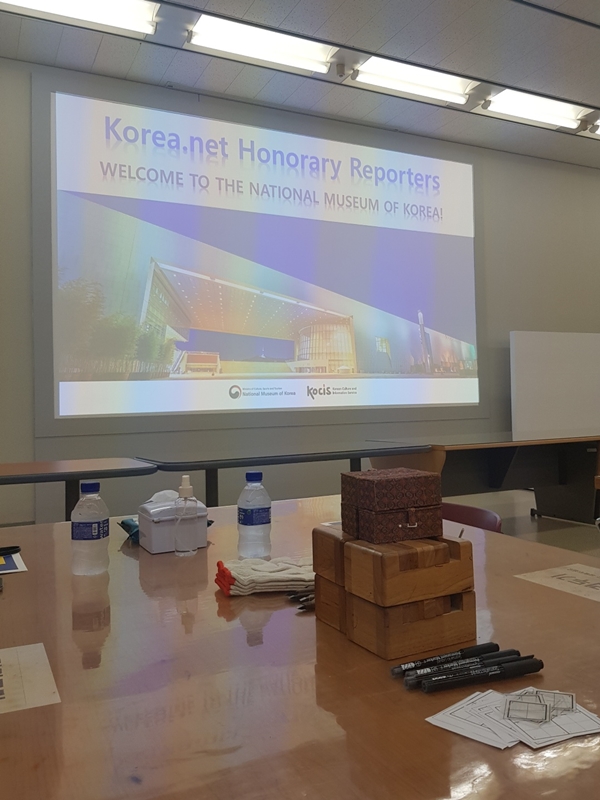
Introduction
An injang refers to a stamp with letters or patterns that used to indicate a person's identity and social class in Korea. In the past, an injang made of wood from a jujube tree and struck by lightning was believed to protect people from bad things. So Koreans carried such a stamp with them at all times as an amulet.
Class
Before making an injang, students in the class briefly learned about the history and significance of Korean seals. All of the required tools were on the tables, so all the class had to do was just follow the instructor.
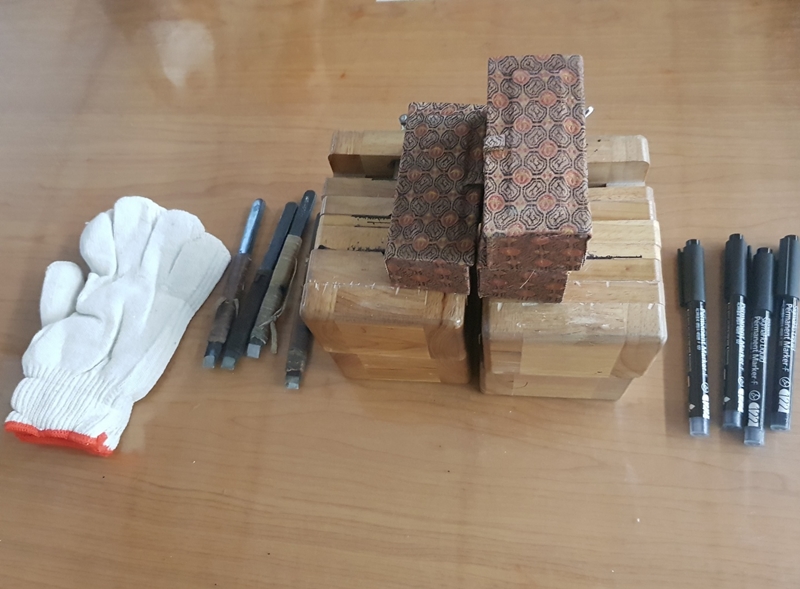
First, I placed a seal in the holder.
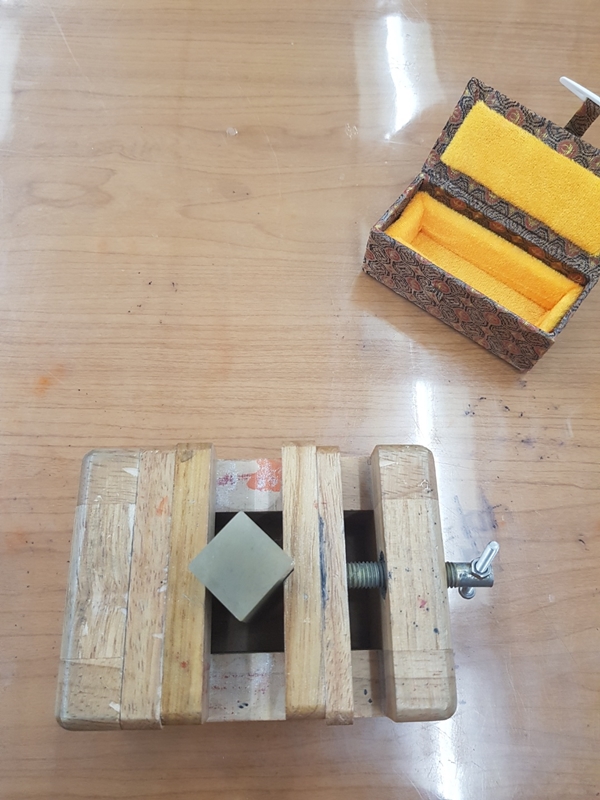
Next, I practiced writing my name or design on paper. After finalizing what I wanted carved, I shifted the drawing on to rice paper. The design I chose was the Hangeul phrase "Geokkeuingin," which means "Kok Ke's seal."
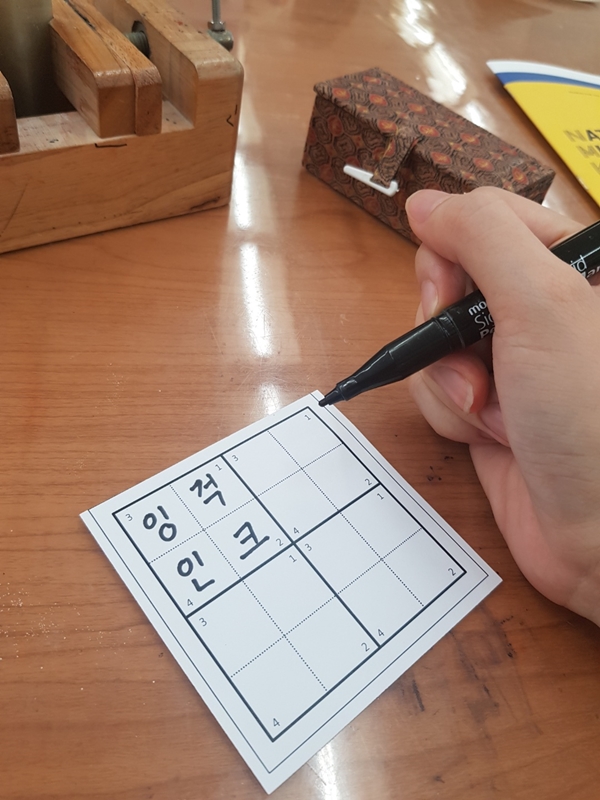
I then drew the inverted characters on the stone and began carving.
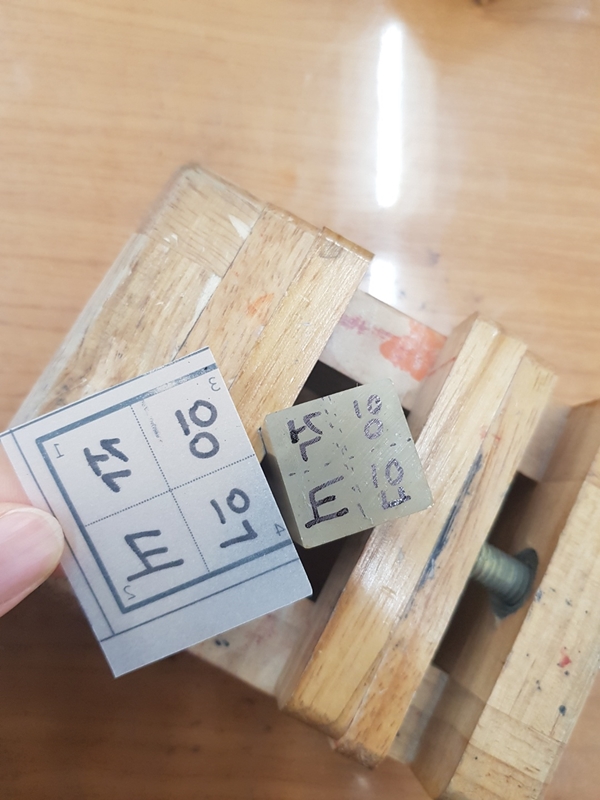
I thought it would be hard to carve on a stone, but it was surprisingly much easier than I expected. Also, the instructors were friendly and always ready to assist us with the carving process.
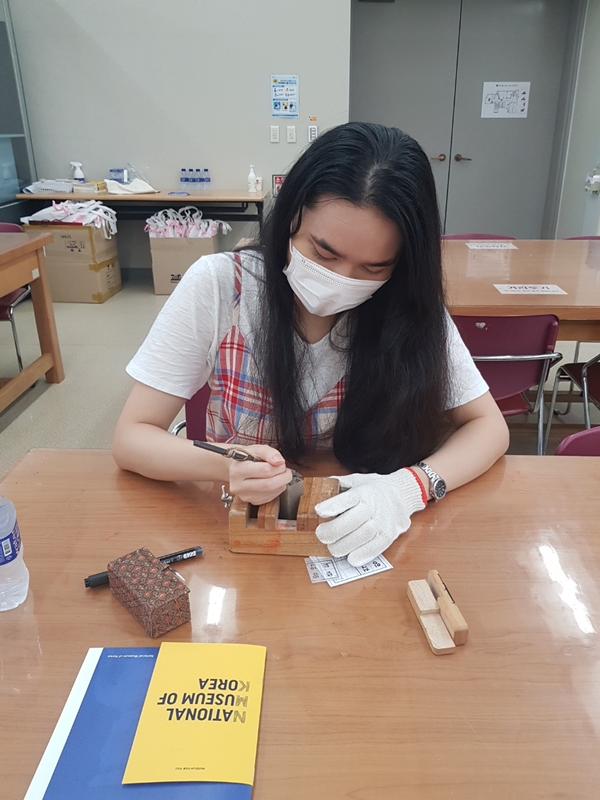
This is how my seal looked after I finished carving.
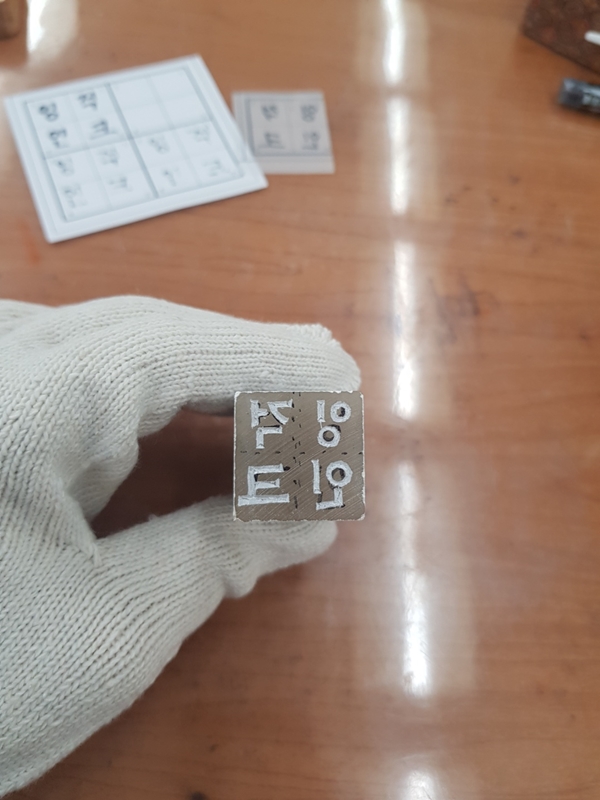
The process was fun and easy to follow. It took around an hour to make my seal.
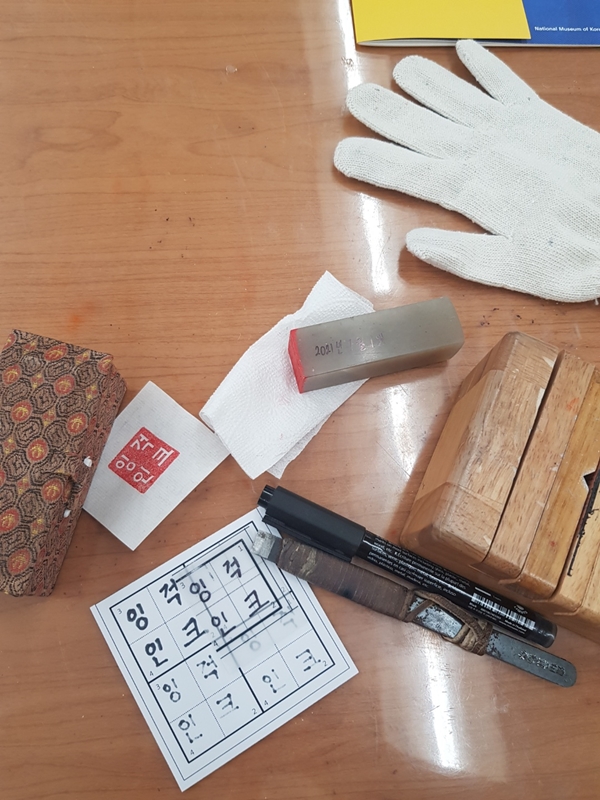
By the end of the class, I learned a lot about the techniques of traditional seal engraving and made my own seal. I recommend this class to everyone because a handmade seal is a useful and memorable souvenir.
enny0611@korea.kr
*This article is written by a Korea.net Honorary Reporter. Our group of Honorary Reporters are from all around the world, and they share with Korea.net their love and passion for all things Korean.